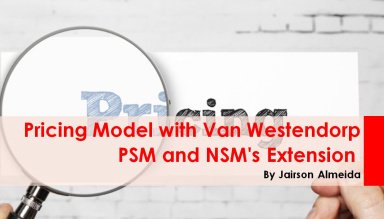Pricing Model with Van Westendorp PSM and Newton Miller and Smith's Extension Template
Pricing Model with Van Westendorp PSM and Newton Miller and Smith's Extension, Price Range, Revenue Max, Marginal prices
Further information
Determining the best price for a product or service, using the Van Westendorp Price Sensitivity Meter and the Newton-miller-smith extension.
Van Westendorp pricing questions offer a simple, yet powerful way to incorporate price perceptions into pricing decisions, namely for new products or services.
Anything else


























